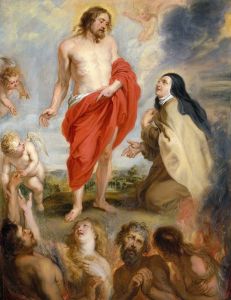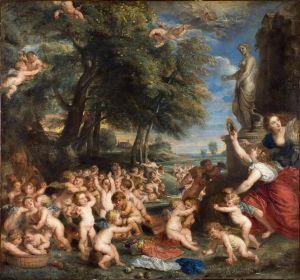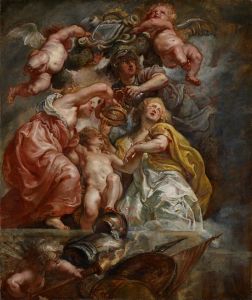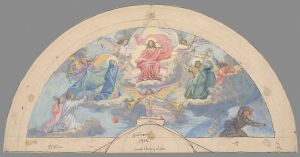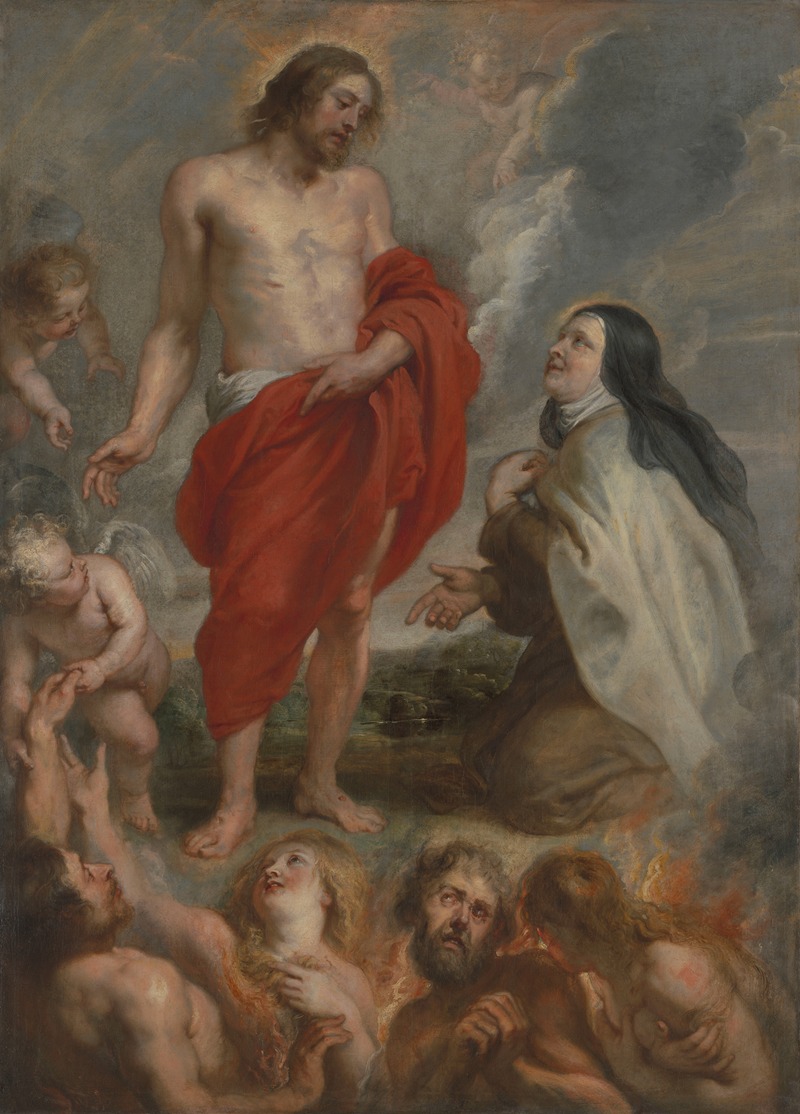
Saint Teresa of Ávila Interceding for Bernardino de Mendoza in Purgatory
A hand-painted replica of Peter Paul Rubens’s masterpiece Saint Teresa of Ávila Interceding for Bernardino de Mendoza in Purgatory, meticulously crafted by professional artists to capture the true essence of the original. Each piece is created with museum-quality canvas and rare mineral pigments, carefully painted by experienced artists with delicate brushstrokes and rich, layered colors to perfectly recreate the texture of the original artwork. Unlike machine-printed reproductions, this hand-painted version brings the painting to life, infused with the artist’s emotions and skill in every stroke. Whether for personal collection or home decoration, it instantly elevates the artistic atmosphere of any space.
Peter Paul Rubens, a prominent Flemish Baroque painter, is renowned for his dynamic compositions, vibrant color palette, and dramatic use of light and shadow. One of his lesser-known works, "Saint Teresa of Ávila Interceding for Bernardino de Mendoza in Purgatory," exemplifies his ability to convey religious themes with emotional intensity and vivid imagery.
This painting depicts Saint Teresa of Ávila, a prominent Spanish mystic and reformer of the Carmelite Order, interceding on behalf of Bernardino de Mendoza, a Spanish nobleman, who is shown in Purgatory. The concept of Purgatory, a state of purification for souls who have died in grace but still need to atone for their sins before entering Heaven, was a significant aspect of Catholic doctrine during Rubens' time. The painting reflects the Catholic Church's emphasis on intercessory prayer and the power of saints to aid souls in their journey towards salvation.
In the composition, Saint Teresa is portrayed with a serene and compassionate expression, her gaze directed towards the heavens as she prays fervently for Mendoza's soul. Her figure is illuminated by a divine light, symbolizing her connection to the divine and her role as an intercessor. Rubens' masterful use of chiaroscuro enhances the spiritual atmosphere of the scene, highlighting the contrast between the earthly suffering of Mendoza and the heavenly grace embodied by Saint Teresa.
Bernardino de Mendoza is depicted in a state of anguish, surrounded by flames that signify the purifying fires of Purgatory. His expression conveys a sense of desperation and hope, capturing the dual nature of Purgatory as both a place of suffering and a step towards redemption. Rubens' attention to detail is evident in the rendering of Mendoza's features and the dynamic movement of the flames, which add a sense of urgency and drama to the scene.
The painting is a testament to Rubens' ability to blend religious iconography with human emotion, creating a work that resonates with viewers on both a spiritual and emotional level. It reflects the Baroque era's fascination with the interplay between the divine and the human, as well as the Catholic Church's efforts to inspire devotion through art.
While specific details about the commission or the current location of the painting are not widely documented, Rubens' work remains an important example of Baroque religious art. His portrayal of Saint Teresa's intercession highlights the enduring power of faith and the hope for salvation, themes that were central to the Counter-Reformation efforts of the Catholic Church.
Rubens' influence on the art world extends beyond his religious compositions, as he was also a prolific painter of mythological scenes, portraits, and landscapes. His workshop in Antwerp was one of the most productive of the 17th century, and his style influenced countless artists across Europe. "Saint Teresa of Ávila Interceding for Bernardino de Mendoza in Purgatory" stands as a testament to his skill in conveying complex theological concepts through the medium of paint, offering a glimpse into the spiritual concerns of his time.






